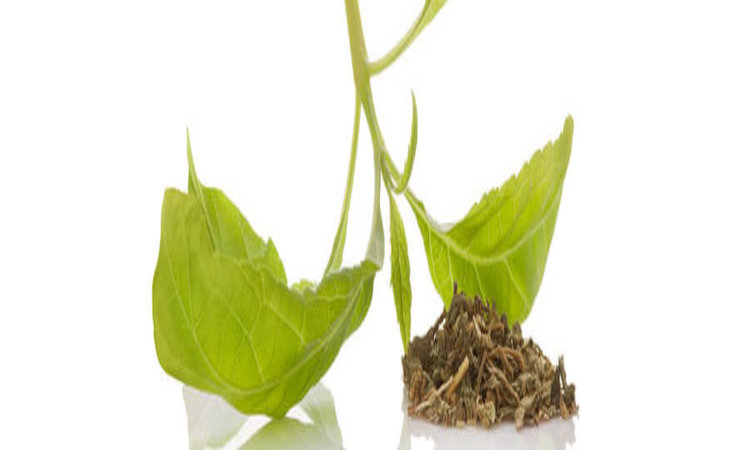
Salvia (Salvia divinorum) is a large perennial herb that grows naturally in areas of Mexico and Central America, and that produces hallucinogenic effects. It contains a psychoactive compound called salvinorin A, which is a powerful hallucinogen and has been used traditionally as both a medicine and as a spiritual aid for religious ceremonies. Salvia use can be risky, however, and cause harmful side effects.
Over the last few years, salvia has become popular in the U.S. Because it is not classified as a controlled substance by the Drug Enforcement Administration, there is no federal law against possessing or using it. More than half of U.S. states, however, have criminalized both possession and use.
Salvia Drug Side Effects
Salvia can trigger an elevated mood and cause hallucinations and dream-like sensations. A person may not be able to discern the difference between things that are really there and those that are purely mental manifestations.
Effects of taking salvia may include the following:
- Visual distortions of lights, colors, shapes, and patterns
- Cartoonish imagery
- Elevated mood
- Uncontrollable laughter
- Recalling of childhood memories
- Sensations of motion
- A sense of uneasiness or anxiety
- Distortion of space and time
- Out-of-body experiences
- Merging with or becoming other objects
- Contact with entities or other dimensions
- Feeling detachment from one’s self
- Loss of contact with reality
Diagnosing Salvia Drug Abuse
Salvia addiction is rare, but salvia abuse, in comparison, can become problematic and should be identified and treated. Signs of a substance use disorder may include the following:
- Using more of the substance than originally intended, or using it for a longer duration or more often
- Trying to reduce use and failing to do so
- Spending considerable time obtaining, using, or recovering from substance use
- Cravings for the substance
- Being unable to maintain obligations
- Using the substance despite damage to relationships and/or health problems
- Engaging less in once-enjoyed activities in place of using
- Continuing to use the substance in dangerous situations, such as driving
- Developing a tolerance
- Experiencing withdrawal when not using as a result of dependence
Withdrawal and Detox
Because salvia has a relatively low potential for abuse and dependence, withdrawal symptoms are uncommon. Most people who use it tend to do so infrequently and are not excessive users, but if withdrawal symptoms do occur, they may include nausea, cravings, irritability, and sleep disturbances. Detox is much easier than with many other psychoactive drugs, but should still be professionally monitored to provide emotional support and prevent complications or relapse.

Co-Occurring Disorders and Substance Use
Abuse of salvia may co-occur with mental health or other substance use disorders. For example, one study found that salvia users consumed more alcohol and were more likely to abuse alcohol than non-users. Co-occurring substance abuse is very common with any type of drug or alcohol.
Also, substance abuse and mental health conditions have common risk factors, which is one reason why they often occur in conjunction. However, it may be possible that using salvia triggers symptoms of an underlying mental health disorder or exacerbates symptoms. For example, it has been known to cause anxiety in some users to the point of panic attacks.
Conversely, someone struggling with a mental illness, such as an anxiety disorder or depression, may resort to using a substance like salvia to self-medicate.
Treatment for Salvia Abuse
Any person who is struggling to stop using salvia and is unable to do so should consider seeking professional help. Although the long-term effects of the drug use have not been subject to many studies, there is some evidence that suggests that it can lead to cognitive deficits, psychiatric symptoms, and dysphoria. Casual use of salvia can also be risky because it alters perceptions and can result in accidents or injuries.
Salvia abuse can be treated as with a combination of therapy, social and family support, lifestyle changes, and by addressing and treating other mental health conditions a patient may experience. For example, cognitive behavioral therapy can help a patient learn how to identify and change the emotions and thoughts that compel them to use drugs and put an end to negative self-perception.
Treatment can be rendered on an outpatient basis or partial hospitalization (PHP) setting depending on the needs of the individual. PHP is highly-structured and supervised, yet supportive and peaceful environment is ideal to help those who have surpassed the worst withdrawal symptoms focus on overcoming their addiction in a long-term holistic treatment setting. PHP provides a comfortable clinical office setting during the day, and an optional relaxing, safe, and supervised home-like residence in the evenings.
Substance abuse of any type can be very challenging to overcome, but those who seek professional treatment, have a solid support group, and are dedicated to making positive changes can learn to live without the use of substances.
You can achieve abstinence and restore long-term wellness and happiness to your life! Contact us today to find out how we can help!
Related: Psychological Addiction
